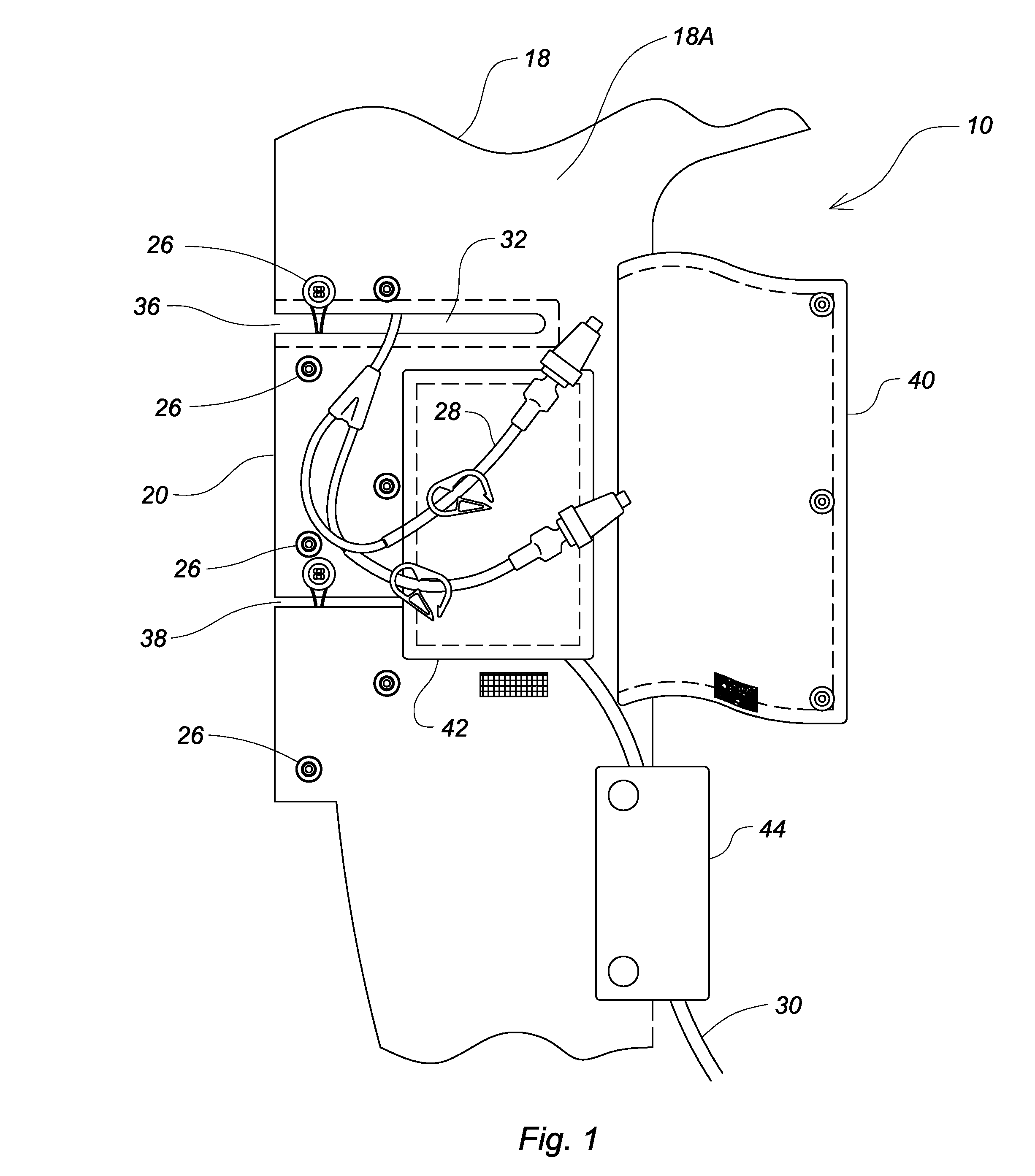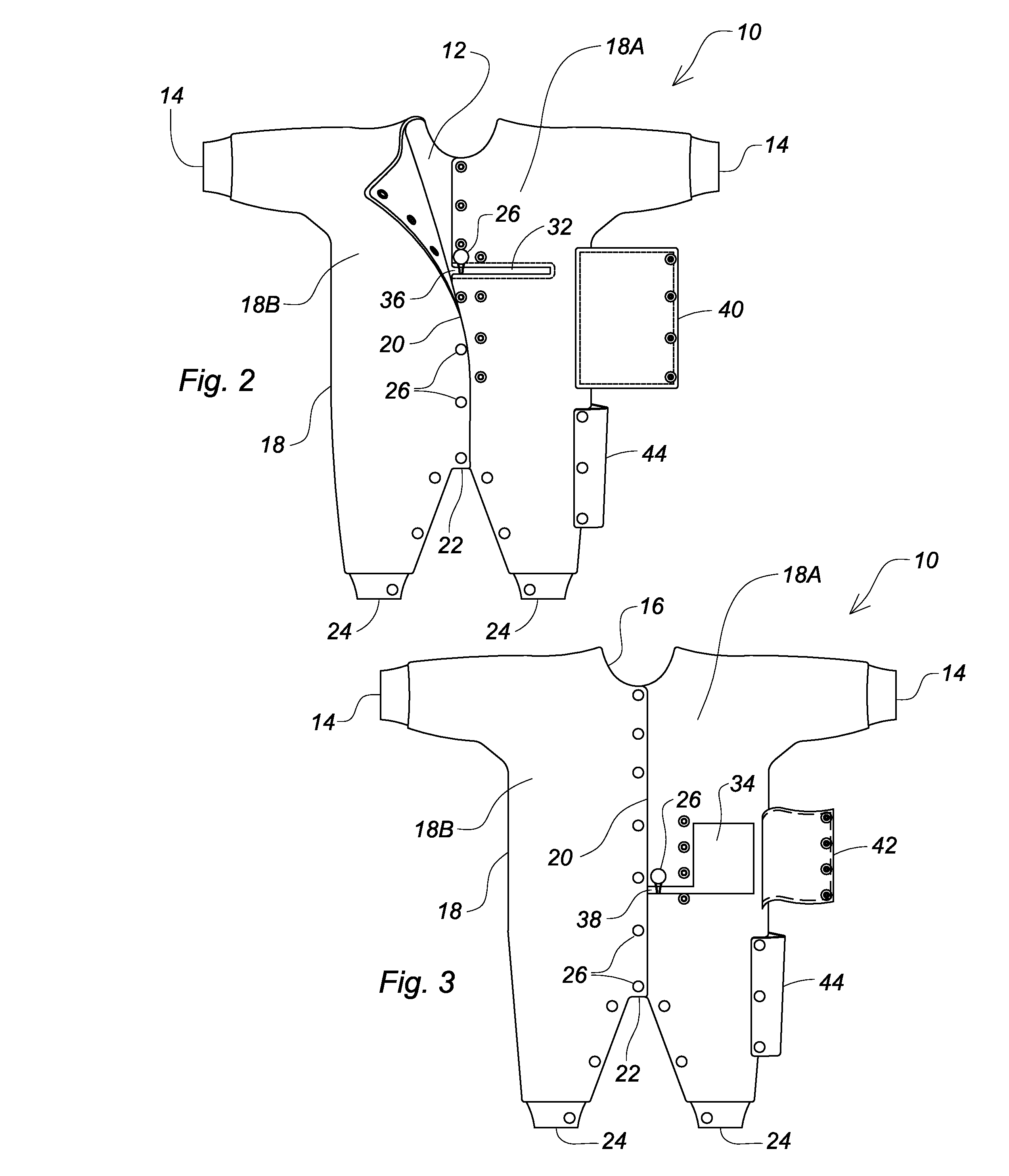Garment for accommodating intravenous catheters and gastronomy tube
a technology for gastronomy and intravenous catheters, applied in the field of garments, can solve the problems of increased infection risk, increased risk of infection, and infection of the hear
- Summary
- Abstract
- Description
- Claims
- Application Information
AI Technical Summary
Benefits of technology
Problems solved by technology
Method used
Image
Examples
Embodiment Construction
[0029]Referring to the drawings more particularly by reference number, reference numeral 10 refers to a garment in accordance with the present invention. Garment 10 comprises a garment body formed of material suitable for clothing and having a back portion 12, arm openings 14, neck opening 16 and a front portion 18. The front and back portions 18, 12 are joined at sides thereof and the front portion 18 has first and second front subportions 18A, 18B separated at a central longitudinal opening 20.
[0030]The particular garment 10 illustrated in the drawings is a body suit commonly called a “onesie.” Arm openings 14 include sleeves and the front and back portions 18, 12 are detachably coupled in a crotch portion 22 and include leg openings 24 with pant legs. The “onesie” is an exemplary embodiment of garment 10 but the invention may have application to a variety of hospital and regular garments, including garments for adults as well as children, as they are primarily vehicles for the el...
PUM
 Login to View More
Login to View More Abstract
Description
Claims
Application Information
 Login to View More
Login to View More - R&D
- Intellectual Property
- Life Sciences
- Materials
- Tech Scout
- Unparalleled Data Quality
- Higher Quality Content
- 60% Fewer Hallucinations
Browse by: Latest US Patents, China's latest patents, Technical Efficacy Thesaurus, Application Domain, Technology Topic, Popular Technical Reports.
© 2025 PatSnap. All rights reserved.Legal|Privacy policy|Modern Slavery Act Transparency Statement|Sitemap|About US| Contact US: help@patsnap.com



